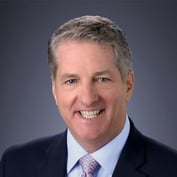Conducting public relations in a down market is like buying stocks in a bear market: rather than seeing an opportunity, many instead flee. With everyone calling themselves a financial advisor these days, it’s important for authentic advisors to differentiate themselves from the pack. Public relations can do this and should be built into your plans for 2003. But like those investors, many advisors skip this important business-building process exactly when they need it most.
Speaking to your target audiences about solving financial problems through the media can be very effective. Share your knowledge for “free,” rather than buying advertising. Instead of telling people how great you are, show them. With patience and some knowledge about how the process works, public relations can lead to a bull market for your business.
Have you ever sat at your desk watching CNBC, thinking “I know as much as this guy. Why is he on TV and not me?” Maybe you dream of being quoted in The Wall Street Journal or Business Week. There’s no reason to dream: you can make it a reality. But you must remember the following three key points of public relations:
1. You Are the Expert No one knows how to solve financial problems for clients better than you. Your methods and case studies are valuable to individual investors who will either try to implement your ideas themselves, or come to an advisor like you.
2. Form a Clear Plan Like giving financial advice, you must first start with a plan when doing public relations. Set it to paper. What are your goals? Do you want to double your business? How much public awareness would it take? Break it down like a public relations professional would by delineating the following issues:
Positioning What are the key aspects of your firm? List the highlights. Then enumerate your strengths as an advisor. For some advisors it might be a unique approach to asset allocation. For others it might be a strong interest in technology. Others might have insights into a certain niche market.
Objectives What are you trying to accomplish (your goals again) and with what kinds of clients?
Target markets Are you seeking high-net-worth individuals, pension plans, or corporate clients? Depending on your potential clients, your PR program will shift directions.
Target media Which press outlets serve the audiences you are trying to reach? But don’t approach competing publications at the same time with the same information.
3. Implement the Plan Once you’ve decided what you want to accomplish, and with whom, you’re ready to implement your plan. Writing will be the first exercise.
Put your opinions on paper. Write down your take on what’s going on in the industry or the investment field, particularly in your specialized area. Once you’re published, you can move on to one-on-one interviews on topics on which you have a strong opinion.
Take a meeting Invite a reporter from your targeted media out to breakfast. Find out what she’s looking for and how you can help.
Budget Figure out how much you’ll need to spend on writing, printing materials, buying those meals for reporters, and the like.
Tools Determine the basics you need to develop, such as a written biography, head shots taken by a professional photographer, and a press kit of information on yourself and your company.
Make a List List the media outlets you’d like to appear in.








 December 01, 2002 at 02:00 AM
December 01, 2002 at 02:00 AM










